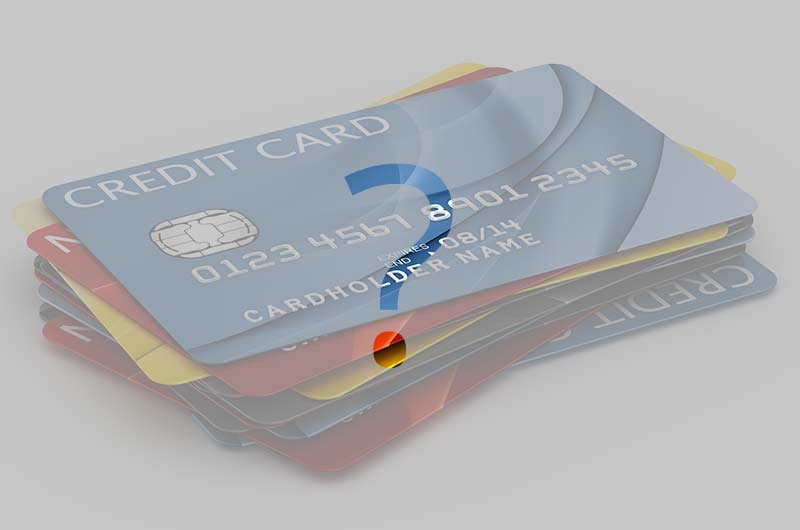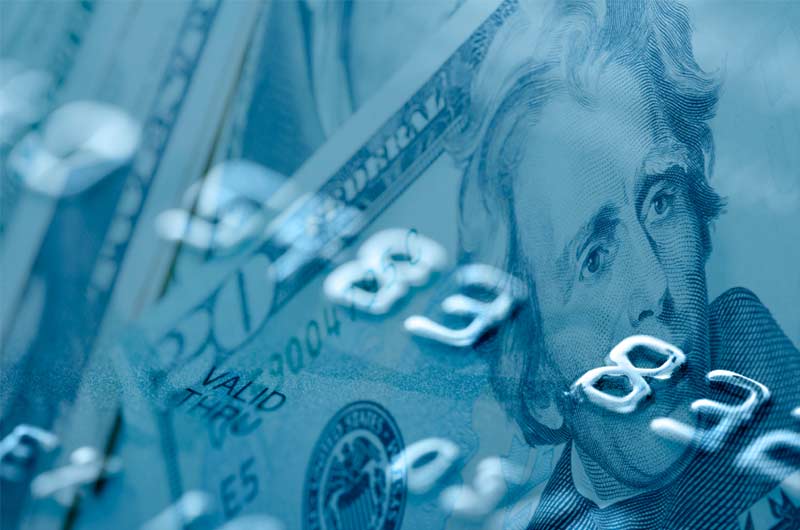How Do Secured Credit Cards Work?
If you're trying to build or reestablish your credit, consider getting a secured credit card. Almost anyone can qualify for a secured card, even if you have past credit troubles or no credit score whatsoever. In this guide, we'll explore how secured credit cards work to help you better understand your options.

A Brief Overview of How Secured Cards Work
A secured credit card has all of the functions of a traditional credit card, including monthly reporting to the three major credit bureaus. Instead of the card issuer funding the line of credit, you provide a refundable security deposit that acts as the credit line. This is where the secured name comes into play.
Every month, you'll receive a bill showing your minimum payment and total balance due. You must make at least the minimum payment to keep your account in good standing. If you carry a balance into the next month, you will have to pay interest on it. You can avoid that by paying off the balance in full.
If you decide you no longer want the secured card, you can cancel it for a full refund (minus outstanding transactions and fees on the card). You may be able to upgrade to an unsecured card after several months of positive payments. If you use your secured card correctly, it can lead to amazing credit opportunities.
The Best Secured Credit Cards for Inexperienced Cardholders
Have no credit card experience at all? These secured credit cards are great for people with no credit history or limited credit card experience.
Applied Bank® Secured Visa® Gold Preferred® Credit Card
The Applied Bank® Secured Visa® Gold Preferred® Credit Card has a low fixed APR of just 9.99%, making it the perfect choice for low-risk credit building. No credit check or minimum credit score required, and you can deposit anywhere from $200 to $1,000 to open the account!
Oakstone Platinum Secured Mastercard®
The Oakstone Platinum Secured Mastercard® is great if you want a secured card with a high credit limit. The 9.99% variable APR makes this card easy to manage, and you can deposit up to $5,000 when you open the account. There are no processing fees to apply, but the annual fee is $49.
Assent Platinum 0% Intro Rate Mastercard Secured Credit Card®
The Assent Platinum Mastercard® Secured Credit Card offers 0% APR for the first six months. After that, you'll have a variable APR of 12.99%, which is still lower than most standard credit cards. Provide up to a $2,000 deposit to open the account, and enjoy all the features you'd expect from a platinum Mastercard.
Using a Secured Credit Card, Step by Step
Here is a more detailed breakdown of how a secured card works.
Step 1 – Compare Secured Cards to Find the Best One for Your Needs
There are many secured credit cards on the market, all with different fees and features. Look over your options to decide which secured credit card is right for you. Some deciding factors include:
- Minimum and maximum deposit amounts
- Annual fees
- Purchase APR (the interest on the card)
- Credit reporting (not all secured cards report payments to credit bureaus)
- Cash advance fees and free ATMs
- Online account management
- Monthly fees
- Funding options (checking account, debit card, credit card, etc.)
- Opportunities for unsecured credit in the future
If you plan to pay off your card balance each month, you may be able to sacrifice a high interest rate for a low annual fee. You won't be charged any interest if you pay off the balance within the grace period.
If you plan to carry a balance, look for a low fixed interest rate. All of the cards featured on SecuredCardChoice.com report to Equifax, Experian, and TransUnion, making them excellent options for building credit.
Step 2 – Complete a Quick Online Application for Approval
Once you find the card that fits your needs, complete a quick online application. You'll be asked for basic information, like your name, address, email address, and Social Security Number. Most secured cards do not pull credit for approval, but they do need your SSN for identity verification. The application process only takes a few minutes, and you can quickly receive an approval online.
Step 3 – Provide a Refundable Security Deposit for the Line of Credit
Your security deposit acts as the line of credit for the card. If you provide a deposit of $700, you'll have a $700 credit line. Almost all secured credit cards accept deposits from checking accounts, and most accept debit card transactions as well. You might have the option to apply now and fund the card later for a low fee, depending on the card you apply for. At some point though, you'll need to provide payment information to fund the card.
Note that the annual fee will come out of your initial deposit, so your available balance won't be the full amount you provide. If you deposit $700 and the card has a $35 annual fee, your available balance will be $665. Once you pay off the balance, the available credit will go back up to $700.
Step 4 – Receive Your Secured Card in the Mail
You'll receive your secured credit card to the address you provided within a few days. The mailing time varies by card, but most applicants receive their cards within 10 business days. The card issuer may also provide a temporary virtual credit card that you can use while you wait for your secured card to arrive. You can start using that as soon as the deposit posts to your account.
Step 5 – Use Your Secured Card for Just about Everything
You can use a secured card for just about any purchase. It is a fully functioning credit card. Pay for groceries, reserve a hotel room, buy clothes online, purchase new furniture for your home – do whatever you would do with a credit card. The vast majority of secured credit cards are backed by Visa or Mastercard, so you can use them wherever those cards are accepted.
Step 6 – Make Your Credit Card Payments on Time Each Month
Ideally, you should pay off your credit card balance in full each month. This allows you to avoid paying interest, and it keeps you out of debt in the future. Credit utilization accounts for 30% of your FICO credit score. That's the ratio of how much you owe on your credit cards compared to how much credit is available to you. If you pay off your balance each month, you'll have a low credit utilization rate that contributes to a higher credit score.
If you cannot afford to pay off your entire balance, pay as much as you can within the grace period. This will cut down on your interest payments, even if it doesn't negate them completely. No matter what, you need to make at least the minimum monthly payment on time to keep your account in good standing. Payment history represents 35% of your credit score, so on-time payments make a big difference for building credit.
Step 7 – The Card Issuer Reports Your Payments to All 3 Credit Bureaus
The secured credit card issuer will report your payments to the credit bureaus each month. If you make your payments on time, you'll have consistent on-time payments reported. If you're repetitively late, your late payments will go on your credit reports. This can hurt your credit score and damage your chances at unsecured credit later on. Keep up with your monthly payments, even if you can only cover the minimum amount due.
Step 8 – Continue Using Your Secured Card to Build Credit
It may take a few months to see positive changes in your credit score, but eventually, your hard work will pay off. Use your card every month and make your payments on time. If you can pay off your balance completely each month, that's even better. Maintain this habit for six months or more, and you'll gradually see your credit score increase.
Step 9 – Upgrade to an Unsecured Card When You're Ready
After 6-12 months of on-time payments, you may have the option to upgrade your secured card to an unsecured line of credit. This process varies from one card provider to the next. Some will offer you an entirely different credit card, while others will simply add to your existing line of credit.
If you've successfully managed your secured credit card in this time, you should be ready for an unsecured credit card. If you think you need a little more practice, continue using your secured card as it stands. Upgrade when you feel like you can confidently manage your credit card without going into debt.
Step 10 – Get a Full Refund If You Cancel or Upgrade to a New Card
If you've decided to cancel or upgrade your secured credit card, you can receive a full refund of your security deposit. The money will go back to your original funding source, unless that account is no longer open. If you have outstanding charges or fees on the account, those will be deducted from your security deposit before you receive your refund. As long as you've paid off your balance, you should receive 100% of your security deposit back.
Is a Secured Credit Card Right for You?
Now that you know how secured credit cards work, it's time to decide if a secured card is right for you. Are you trying to build credit? Do you have credit struggles from the past that make it difficult or impossible to get a traditional credit card? Do you have at least $200 to fund a line of credit? If so, a secured credit card may be an excellent option.
Explore the numerous secured credit cards offered at Secured Card Choice, and find the one that best aligns with your lifestyle. Use the tips above to manage your secured card, and enjoy the credit score boost that follows!


